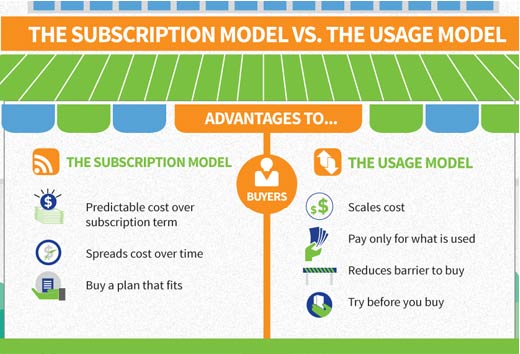Over the last decade, CEOs, investors, analysts and business advisors have fallen in love with the recurring revenue model. And why not?
Recurring revenue models provide for:
- more predictable revenue streams
- the ability to scale costs with revenues
- a lower cost of sales, and higher lifetime customer value
- benefit to customers due to lower up-front costs and more flexible terms
So the question is not if you’ll adopt such a model, but how to determine the right recurring revenue model for your organization.
Aria Systems, a leader in cloud billing systems, recently released a whitepaper that demystifies the three most widely adopted models: subscription, usage, and subscription plus usage, covering how each makes sense in different situations by delivering different advantages for sellers and buyers. The e-paper further delves into the various pricing “tactics” that can be used in conjunction with these models such as “freemium,” pre-paid, tiered and unlimited usage.
Click through for an overview of the three main types of recurring revenue models and the advantages they provide, as identified by Aria Systems.
Recurring revenue models come in three basic flavors.
In picking the right revenue model, businesses should align with what works for their customers.
In picking the right revenue model, businesses should align with what works for their customers.
Combination plans (subscription plus usage) charge a subscription fee for service with any overage billed as extra charges. More broadly, a combination plan can be any mix of recurring charged services with usage services.
Businesses should look for a solution that supports…








